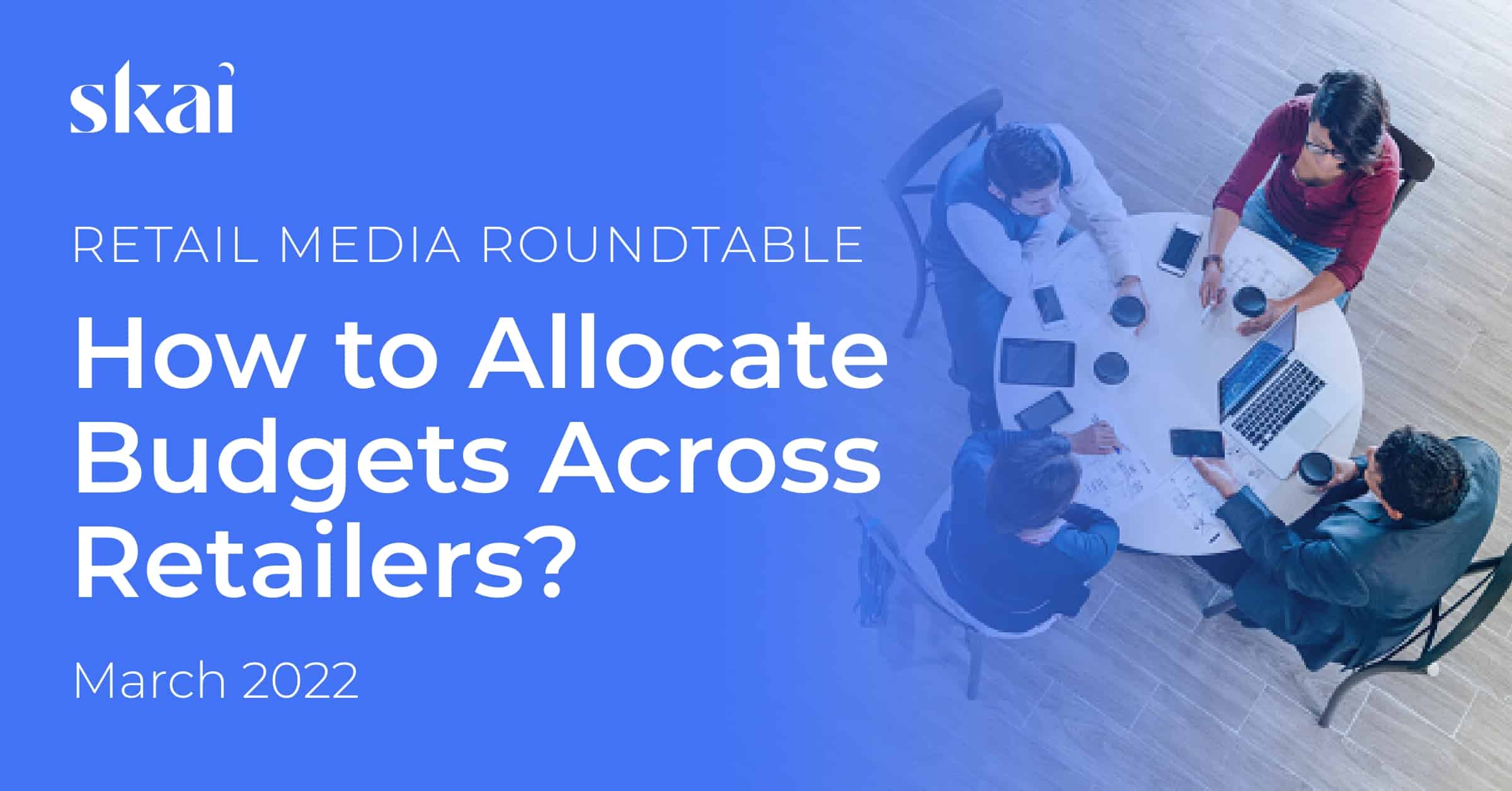
Joshua Dreller
Sr. Director, Content Marketing @ Skai

Joshua Dreller
Sr. Director, Content Marketing @ Skai


Retail media is growing so quickly that practitioners are still figuring out best practices and the proper ways to manage these programs. So, we thought we should check in with experts across the industry to hear how they’re tackling some of the new challenges of this channel as it evolves.
I invite you to tune in each month to learn more as we bring new experts to field questions.
Do you have any burning questions you’d like to ask our expert panel? Would you like to contribute to this series? If so, please reach out to our content director, Josh Dreller, at joshua.dreller@clearskai.com.
– Hannah Blackbourn (Managing Director, Retail Media @ Skai

We start with the client’s goals which dictate our tactical strategy and the levers we push. We then rank retailers based on the brand’s sales volume and capabilities.
It is important to understand both historical data (sales, performance, etc.) and the campaign objective by brand. We also look at outside factors such as online category growth to help better understand the competition and category demand. With an understanding of both the brand and category, looking at each retailer’s capabilities and available brand catalog will help determine the budget and perceived sales by retailer.
For example, a retailer with a small amount of the catalog available, limited targeting capabilities, and less robust reporting would receive less budget than a more robust catalog paired with advanced targeting and reporting.
And it can get more complex, that although the retailer may be a major player for the brand, however, the capabilities are limited. We would evaluate 3P vendor offerings to help supplement the media plan.

Amazon continues to make up a bulk of the advertising pie which is what we typically see in Skai, but we are seeing channels like Walmart and others like Instacart, Target, Grocery Network, and more increasing QOQ. One of the driving forces behind this diversification is the competition on Amazon becoming increasingly intense. Despite this competitiveness, I wouldn’t say that diversifying to diversify is always better.
If you are just dipping your toes into retail media, Amazon is an obvious choice, and learning to execute successfully there can help implement best practices and general expertise in retail media advertising. However, the strategy behind selecting your retailers should align both with your brand’s advertising goals and what digital shelf is the best fit. With the rollout of CitrusAds on Skai, we are seeing quite a few clients who are interested in CPG diversifying here and focusing on Target, but those same clients are not necessarily the ones also diversifying with the Grocery Network.
From an investment perspective, keeping a portion of your budget to test and learn is definitely an advisable strategy, especially with the competitiveness we’re seeing in Amazon. Typically, I see a range of what is best for a ‘learning budget,’ and it varies from client to client, but pushing for growth and learning in your retail media investment is what can set you apart in your category.
As these new retailers emerge, advertisers are in a unique position to gain expertise and mastery as a new channel evolves out of infancy which, though comes with some growing pains, ultimately can carve the path to greater ROI and performance gains for a brand.

First, ask yourself what is my distribution and assortment by retailer look like? Depending on this, a brand/manufacturer can then determine how much of the budget should go to each to support the sell-through of products.
Second, outside of the distribution and assortment, how do I want to be represented within the retailer? Maybe your brand hasn’t been historically on Amazon, and you need to make a bigger splash to jump into the category, or maybe you have deep competition in Target among your category, and to be seen, it will take higher ad spend.
There is no wrong answer but understanding this dynamic of the relationship between brand and retailer and the value of the retailer back to the brand is critical to determine how to invest.

Assuming budgets allow, utilization of all of these types of ads can help protect your branded space, attract new consumers, and conquest from competitors. We typically recommend heavying up budgets from the bottom up, which prevents situations where you attract a brand new consumer using a social ad only to lose them to a competitor that is advertising heavily lower in the funnel.
Breaking down lower funnel advertising further, not all ad platforms are created equally. Amazon is the industry leader in lower-funnel targeting simply because of its lack of minimum bids, like those seen on Criteo, and its ease of use. Truthfully, a platform like Skai is one of the only ways to effectively run ads on Walmart, as the Walmart Connect interface is still in its infancy and has a long way to go before its ease of use allows for on-site optimizations to be truly effective.

I then carve out a smaller percentage of my total retail media budget for testing out marketplaces that are new both to us and the client brand. When selecting new marketplaces to test, I look for smaller, niche marketplaces that cater to my target audience and product category.
Knowing how much to invest in the newer, niche marketplaces is more difficult. The challenge is that there are so many new retail marketplaces available, as new retail networks launch all of the time. Each marketplace comes with its own nuances that are important to understand before recommending significant investment.
For example, marketplaces vary in their approach to targeting options, ad placements, CPC calculation, budget settings, etc. For that reason, I recommend a smaller test budget for the first month, for example, $5K – $10K. After the first month, I analyze performance and use that data as a basis for the monthly budget recommendation going forward.
There’s a significant opportunity within these niche marketplaces to reach a highly targeted, in-market audience. However, as usual, we want to ensure that spend level and allocation recommendations are data-driven whenever possible.
You are currently viewing a placeholder content from Instagram. To access the actual content, click the button below. Please note that doing so will share data with third-party providers.
More InformationYou are currently viewing a placeholder content from Wistia. To access the actual content, click the button below. Please note that doing so will share data with third-party providers.
More InformationYou are currently viewing a placeholder content from X. To access the actual content, click the button below. Please note that doing so will share data with third-party providers.
More Information